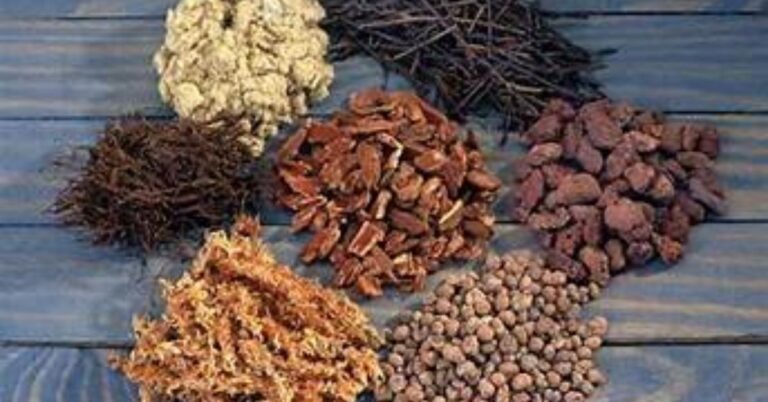Orchids are captivating, but they can be tricky to grow if you don’t provide the right conditions. One of the most critical aspects of orchid care is choosing the right potting mix. Unlike regular houseplants, orchids don’t thrive in traditional soil. They have unique needs that should be met for healthy growth and blooming. In this guide, we’ll walk you through understanding what makes an excellent orchid potting mix, the components involved, and how to choose one that suits your specific type of orchid.
Understanding the Natural Habitat of Orchids
To choose the best potting mix, it’s essential to understand the environment that orchids naturally thrive in. Most orchids are epiphytes, meaning they grow on trees and absorb moisture and nutrients from the air and rain. This gives them a free flow of air around their roots, which prevents root rot and encourages healthy growth. Replicating this unique environment is key when selecting a potting mix.
Why Regular Potting Soil Doesn’t Work
Many new orchid enthusiasts make the mistake of using traditional potting soil, which is far too dense. Regular soil holds water and can suffocate orchid roots, leading to root rot. Orchids need a potting mix that mimics their natural airy and well-draining habitat. The right mix should allow ample airflow, retain some moisture without becoming waterlogged, and provide support for the plant.
Key Components of Orchid Potting Mixes
Orchid potting mixes can vary, but there are some common components that provide the structure and drainage needed for orchids. Here’s a breakdown:
Bark Chips
Bark, usually from fir or pine, is a popular component in many orchid mixes. It provides an airy structure and good drainage, which is essential for most orchid varieties. Bark does break down over time, so it’s important to repot orchids every couple of years to ensure the mix stays effective.
Sphagnum Moss
Sphagnum moss is prized for its water retention properties. It holds moisture well, making it suitable for orchids that prefer a bit more humidity. However, it needs to be used carefully to avoid excessive moisture, which can lead to root rot. Sphagnum moss works well in blends or as a top layer.
Perlite
Perlite is a volcanic glass that has been processed into lightweight, porous granules. It’s commonly used to improve drainage and aeration in potting mixes. For orchids, adding perlite helps maintain a balance between moisture retention and air circulation.
Charcoal
Charcoal is sometimes added to orchid potting mixes to absorb impurities and prevent bacteria buildup. This component can help keep the mix fresh and reduce the risk of fungal growth, promoting healthy root development.
Coconut Husk Chips
These chips offer a sustainable alternative to bark and retain moisture while still providing good drainage. Coconut husk chips are long-lasting and can be an excellent addition to any orchid mix, especially for those who prefer environmentally friendly options.
Choosing the Right Mix for Your Orchid Type
Not all orchids have the same requirements. Selecting the right potting mix depends on the type of orchid you’re growing. Here’s a closer look at the preferences of popular orchids:
Phalaenopsis (Moth Orchids)
Phalaenopsis orchids are among the most common and beginner-friendly orchids. They do well in a potting mix that includes a balance of bark and sphagnum moss. The bark allows airflow, while the moss retains moisture just enough to keep their roots hydrated without overwatering.
2. Cattleya Orchids
Cattleyas are known for their striking blooms and are popular among enthusiasts. They prefer a drier environment between waterings, making bark chips and perlite an ideal mix. This combination offers excellent drainage, which aligns with their natural habitat.
Dendrobium Orchids
These orchids require a potting mix that drains very well. A blend of medium-sized bark chips, charcoal, and a small amount of perlite ensures that water flows through without lingering at the roots. Dendrobiums don’t need as much moisture as Phalaenopsis orchids, so a drier mix is better.
Oncidium Orchids
Oncidiums, often called “dancing lady orchids,” prefer a mix that retains some moisture but doesn’t stay wet for long periods. A blend of bark, sphagnum moss, and perlite strikes a good balance between moisture retention and aeration.
Pre-Mixed vs. Custom Potting Mixes
For beginners or those short on time, pre-mixed orchid potting blends are available and often tailored to specific types of orchids. These pre-made mixes take the guesswork out of choosing components. However, creating your own mix can be beneficial if you want to fine-tune the blend to meet your orchid’s specific needs. Custom mixes allow you to experiment with proportions and additives that work best for your growing conditions.
Factors to Consider When Choosing a Potting Mix
Environment and Climate
The climate you live in will affect how quickly the potting mix dries out. In a humid environment, a mix that is heavier on bark and perlite is better to prevent over-retention of moisture. In drier climates, incorporating sphagnum moss or coconut husk can help keep moisture levels balanced.
Watering Habits
If you tend to water frequently, opt for a mix that drains more rapidly to avoid root rot. For those who sometimes forget to water, a mix that includes water-retentive components like sphagnum moss may be more forgiving.
Pot Choice
The type of pot you use can also impact the effectiveness of the potting mix. Terracotta pots, for example, wick moisture away and can help prevent overwatering. Plastic or ceramic pots hold more moisture, so a well-draining mix is critical in these cases.
Repotting
Over time, even the best orchid potting mix breaks down and loses its effectiveness. Repotting every one to two years helps refresh the medium and prevent the buildup of harmful pathogens. Signs that it’s time to repot include roots growing out of the pot, a mix that no longer drains well, or a plant that seems less vigorous. Always repot with fresh potting mix and sterilized tools to ensure optimal plant health.

